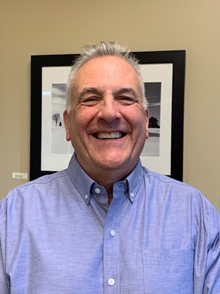With extensive courses, dedicated faculty, and culminating experiences that prepare students for their careers, communications majors remain a reminder of why the School of Communication is the best in the Midwest to study communication.
Formerly known as both the Department of Speech and Department of Communication, the School of Communication has seen many name changes. Today, the school is home to four majors: communication studies, journalism, mass media, and public relations. Public relations became the first major in 1985. In 1960, speech was a major offered in the school but evolved into the communication studies major in 2003. In 2004, the mass communication major split into mass communication and journalism, and mass media became the last major (rebranding from mass communication) in 2010. Amid all the changes, students have been intently learning for decades.
“Because we offer different approaches to understanding communication, any student interested in communication can find a home in our school,” said Dr. Aimee Miller-Ott, interim director of the School of Communication. “In addition, we are blessed with faculty who have both industry and academic experience. Students then get the best of both worlds—they learn how to navigate the professional work world with knowledge of theory and research that informs whatever job they go into.”
Communication Studies
The majors in the School of Communication would not be what they are without the program coordinators who contribute to the advancement of students’ education. A program coordinator oversees the development of a program and ensures that students are receiving valuable information.
Dr. Lance Lippert leads the communication studies major. His ideas have changed the way the major is formatted. Lippert graduated from Southern Illinois University with a Ph. D. in communication in 2000. Before Illinois State, Lippert worked in radio and television for 12 years and taught at Fort Hays State University from 1984-94. Lippert came to Illinois State in 2000 and has been here ever since. On the side, Lippert consults for various public, private, and governmental organizations.
“I chose the School of Communication because of its in-state reputation and the nationally known faculty that I wanted to learn from,” said Lippert. “I had the opportunity to continue to learn and grow post-graduation, and once I got here, I wished that I went here for my education.”
Communication studies is an academic discipline that examines communication in various contexts. The School of Communication offers three sequences: interpersonal communication, organizational and leadership communication, and public culture and advocacy communication (which includes political communication and a new course on social justice). “We changed the major to fit social justice needs, and it’s more responsive to students’ learning styles,” Lippert said. Students in the communication studies major also have classes that focus on the topics of rhetoric and civic engagement.
“I love communication studies because it gives me the opportunity to comprehend and analyze human interaction in various contexts, creating a more in-depth appreciation for the intricacies of communication,” said senior interpersonal communication major Kat Kopija.
Along with supplemental classes, each major has a final class or opportunity for graduating seniors that concludes their learning.
The final, or capstone, course for communication studies is an eight-week course. “The class is meant to assist students in the transition from classroom to career,” Lippert said. “Many alums come back to coach students on how to obtain a first job and what to expect.” The capstone is intentional and consistent with job preparation, and students can represent their brand in a way that is beneficial to them.
The communication studies major prides itself on transferable skills, allowing students to find jobs virtually anywhere. Students can find a career as an academic advisor, account executive, communication/speech coach, conflict negotiator, governmental relations expert, hospitality manager, health care advocate, legal assistant, military officer, paralegal, politician, political activist, retail manager, sports communication manager, and many more.
Mass Media
The mass media major is led by Dr. Brent Simonds, Ed.D. ’03. Simonds began his career as the director of local origination programming for Frontier Cablevision in 1983 and currently does video producing and directing for several publication companies. Simonds began his academic career as a lecturer in 1997 and became a full professor in 2014.
The mass media major focuses on how information, news, and other communications are shared among large populations of people. Students in this major study theory and gain practice firsthand in the digital sphere.
“As mass media coordinator, I see my role as providing opportunities for both students and faculty to progress in their careers,” Simonds said. “For example, with the help of my colleagues, the entire mass media curriculum has been revised to better reflect the realities of today’s media landscape.”
Students in the mass media major have a wide variety of classes available at their disposal, such as writing, cultural criticism, and media law. Hands-on classes include real television experience with TV-10 News and radio with WZND through their equipment and software.
“I wanted a major that was broad and would allow me to sample, learn from, and experience all different mediums, and that’s exactly what the mass media major offers,” said senior mass media major Eric Boyce. “I have been able to gain valuable experience in radio, television, and print, while learning and growing elsewhere in the media industry as well.”
Mass media students have a five-week capstone course to recap the past four years. “This course is taken right before graduation to help students write their resumes, assemble their portfolios, and practice for job interviews,” Simonds said. “The class also requires students to make presentations on current situations in the mass media world and to reflect on their education and professional training.”
There are a multitude of careers students in the mass media major can go into including, but not limited to, news producing, production, sportscasting, radio, advertising, sales, writing and webcasting, audio engineering, executive directing, media event planning, motion graphics designing, sports announcing, and videography.
Journalism
The journalism major is home to program coordinator Dr. Megan Hopper ’02, M.S. ‘06. As a two-time Illinois State alum, Hopper has perfected her craft to enhance the studies of journalism students. Hopper began her journalism career as an intern at The Vidette, the student-run online news hub. During her senior year as an undergraduate student, she secured an internship at the Pantagraph, which led to her first professional position. During this time, Hopper realized she wanted to pursue education. After receiving her master’s and doctorate, Hopper was hired in the School of Communication as an assistant professor in 2011 and was promoted to associate professor in 2017.
Hopper was given the opportunity to become program coordinator in 2023. “I truly feel like things have come full circle,” Hopper said. She now teaches and schedules the classes she once took as a student as the program coordinator.
The journalism major encompasses writing about news for various forms of publications, such as newspapers, magazines, radio stations, television channels, or news websites. Students in this major research, gather facts, write informative stories, work with audio and video clips, and create and use websites.
“Illinois State’s journalism program is uniquely great in terms of opportunity,” said senior journalism major Braden Fogerson. “The School of Communication has found a sweet spot where—unlike bigger schools—the school provides hands-on experience directly to the students, and also provides good resources and quality teachers.”
There are a multitude of classes and experiences students in the journalism major can take advantage of. Students take classes in convergent media writing; communication research method; technology within the field; print, online, and broadcast newswriting and reporting; and the law, policy, and ethics of journalism. Students can also gain experience through TV-10 News, WZND, and The Vidette.
Unlike the other majors, the journalism major does not have a senior capstone. Instead, students can complete certificates of excellence in various areas of journalism by enrolling in specific coursework. “I very much look forward to guiding the journalism program in the future and to continuously do my best to make sure our students are given the more effective and up-to-date theoretical and practical knowledge they need to succeed in the very important profession of journalism,” Hopper said.
Students with a degree in journalism have gone on to careers as a news reporter, anchor, documentary producer, editor, freelance writer, meteorologist, social media manager, web and graphic designer, corporate communication writer, news analyst, newsroom director, photojournalist, producer, and many more.
Public Relations
The last major in the School of Communication is public relations, and Dr. Rebecca Hayes is the program coordinator. Hayes began her academic career with a bachelor’s in theatre and environmental science, which led to a job in science communication and media relations. This was Hayes’ introduction to public relations, in which she would later receive a master’s degree. After returning to industry, Hayes had the opportunity to teach and conduct research and loved it so much, she enrolled in the Ph.D. program at Michigan State University and graduated in 2009. Soon after, she joined the School of Communication at Illinois State. After 10 years with Illinois State, she recently stepped into the coordinator role, ready for a new challenge.
“Public relations is a fantastic, dynamic profession, changing all the time,” said Hayes. “But that means we need to continually update our courses to include developments such as artificial intelligence, new communication platforms, and cutting-edge research. I am excited to be driving this effort across our curriculum.”
Public relations is how organizations and people come to know, form opinions, and work together on matters through effective and ethical communication. It seeks to manage relationships between an organization and its publics, using multiple communication channels like social media, internal platforms, traditional media, and even events.
Public relations students take introductory classes to learn about the field and the profession as well as essential theories and applications in communication. There are required classes to enhance writing skills and provide methods of researching and evaluating communication effectiveness. Students gain experience in digital and traditional media that PR professionals use along with learning how departments and agencies are managed.
“I love being a PR major for a multitude of reasons,” said junior public relations major Meghan Smith. “The professors genuinely care about their students, the major has allowed me to explore my creativity and find the areas that I excel in, and the large number of opportunities within it. I am so grateful for my PR community and the opportunities they have provided me with.”
The public relations major has two capstones for students to complete, Public Relations Campaigns and Public Relations Management and Research. “I teach the campaigns class, and we work with one external client each semester,” Hayes said. “Teams of students compete with each other for the client’s business, and while it is a lot of work, it is also pretty fun. I try to keep that class grounded in the PR industry, keeping our content connected to what is really happening in the real world.”
Public relations is useful in any industry, so students have endless career opportunities. Students can pursue careers as an account executive, event planner, legislative assistant, political strategist, public opinion or market researcher, publicist, social media officer, sports information officer, and much more.
In the School of Communication, students create portfolios and build resumes that lead to success. Students walk into Fell Hall, but professionals walk out.
“Our alumni go into such diverse industries after graduating from our program,” Miller-Ott said. “From sales to human resources, from documentary filmmaking to TV production, from marketing executives to social media strategists, students can seek out opportunities that best fit their interests and expertise after graduating. We have an extensive alumni network that helps provide students internship opportunities, jobs, and professional contacts. Our alumni truly give back to our current students and those recently graduated to help guide their success.”
For more information on what the School of Communication has to offer, visit Communication.IllinoisState.edu.





